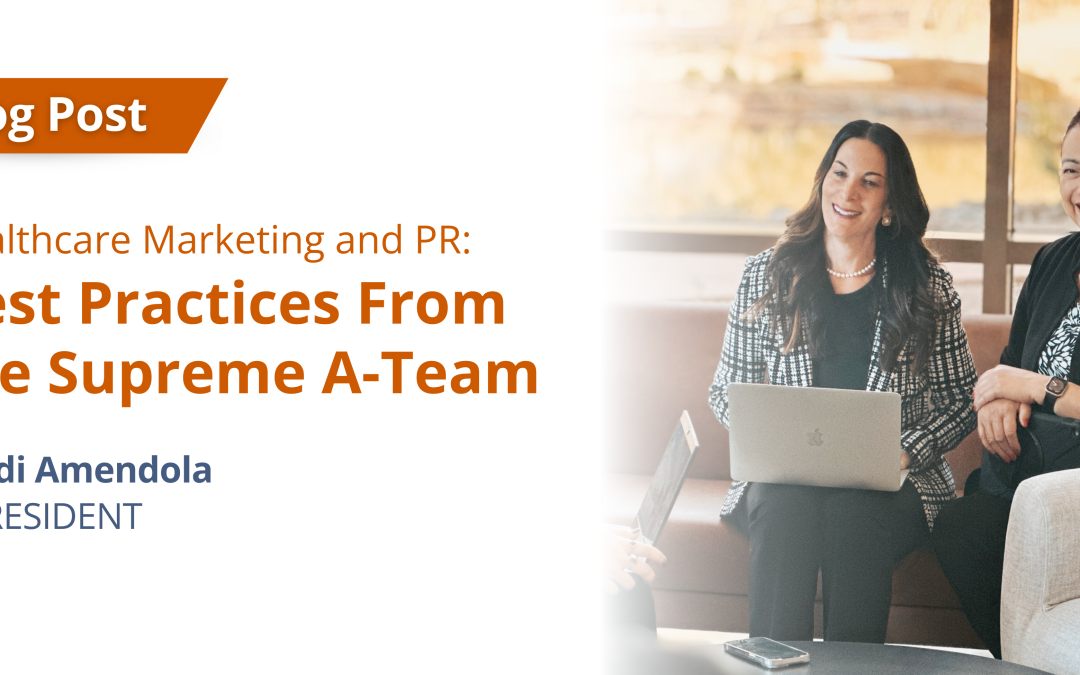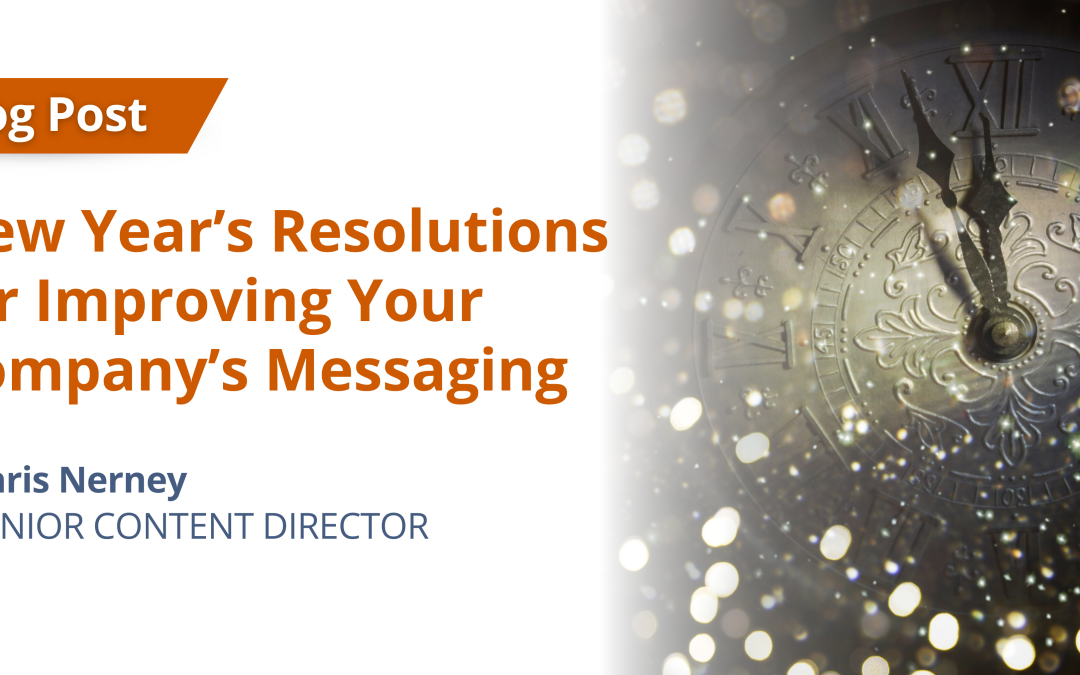
by Marcia Rhodes | Feb 19, 2025 | Blog
A strong partnership with a public relations (PR) agency offers numerous benefits to companies by generating attention and interest that draws in new employees, industry partners, and, most importantly, customers.
More and more companies are realizing the value of PR, as globally the PR market is expected to grow to more than $133 billion by 2027. In the U.S., demand for PR specialists is predicted to grow by about 6% by 2032 (faster than average), according to BLS.gov.
However, achieving stellar PR results requires some upfront efforts to ensure the alignment of goals and objectives between the client and the PR agency. The best PR agency–client relationships are characterized by collaboration, respect, unity, and a mutual understanding of the end goals and expectations.
Following are some tips for successful PR partnerships:
Establish a single source of contact: Designate a dedicated liaison who is accessible and responsive to requests for data and media interviews. The ideal partner shares information on company activities and news proactively and views the PR agency as a partner, not a vendor.
Know your people: Draw up a list of spokespeople, including internal executives and customers who will sing your praises, who can participate in media opportunities, as well as the specific topics they prefer to focus on. When it comes to healthcare media relations, it’s always best to lead with a provider customer than a solution provider.
Create the culture: The brands that realize the most value from PR have established a company culture that encourages adoption of new concepts and strategies. An essential component of this is a leadership team that sees the value of PR and its important role in the marketing mix to drive credibility, recognition, and brand awareness, as well as fueling ongoing online content marketing across integrated PESO (Paid, Earned, Shared and Owned) channels.
Develop a social plan: Social platforms such as LinkedIn offer another avenue beyond traditional media for brands to establish thought leadership and contribute to relevant industry conversations. To get the most out of social media, develop a written social media strategy and guidelines (we can help!) about having an active presence on relevant platforms. It is also a big help to have an executive team and employees who are — or willing to become — social media apostles.
See the big picture: Generating the media interest that will lead to valuable coverage and market attention doesn’t happen overnight. It’s important for clients to have a company-wide understanding that PR is not a “project,” but rather a process that should be integrated into every function of the organization from marketing and sales to product development and human resources.
Other factors that set the stage for a productive PR partnership include having a clear brand voice and message strategy, an optimized website, and a customer relationship management tool with a solid process in place for managing leads. (If you don’t have any of these, we can help get you there!) Ultimately, like all relationships, the PR agency–client partnership is all about taking the time to clearly communicate and understand each other to establish productive and positive collaborations.

by Brandon Glenn | Feb 5, 2025 | Blog
Case studies represent an opportunity for companies to present potential customers with a real-world story of how their products and services helped an actual customer solve a common industry-wide problem.
Whether the customer’s positive outcome involved greater revenue, lower costs, or happier clinicians and patients, a case study enables companies to move beyond talk with prospects to action – as in, “If you take the same action as our customer did, you, too, can overcome the barriers that have been holding you back from accomplishing your objectives.”
Potential customers want to be reassured that they are hiring a vendor that has experience helping companies like them surmount obstacles like those that they currently face. A well-written case study will accomplish just that.
At its most basic level, a case study follows the familiar story arc of “problem – solution – results,” but there’s more to it than that. Here are three must-haves to build better case studies:
Quantified results: The surest way to kill the potential of a strong case study is to include unimpressive or vaguely worded results that fail to clearly illustrate the value of adopting a new solution. Solid case studies require data to demonstrate the improvement of key metrics. While some customers may be understandably reluctant to publicly share hard dollar amounts, many will be more comfortable stating percentage increases or decreases, such as, “reduced costs 10% in the first year of implementation.”
What’s next: It’s easy to remember that a case study highlights what a customer accomplished after adopting new technology, but one less obvious element to include involves next steps. Now that the customer has taken care of its most pressing issues, what are their plans for the future? While it may seem like a small point, including next steps can help potential customers envision a long-term strategy around your product.
The customer’s own words: A customer’s own description of a solution’s impact will always carry more weight than what a vendor says about its own products. Interview some end-users to obtain quotes and insights that detail the difference your product made for them – once again with an eye toward obtaining quantifiable measures.
Case studies can be effective tools for nudging prospects and customers along the next steps of the buyer journey. To maximize their value, be sure to include quantified results, what’s next, and the customer’s own words.

by Jodi Amendola | Jan 22, 2025 | Blog
One of the great pleasures of my job is watching members of the Amendola team – the A-Team – demonstrate their knowledge and expertise about public relations and marketing. I see this during staff meetings, on calls with clients and prospective clients, and in the work the A-Team produces for the many companies we represent. I go to sleep every night knowing I hired a team of senior level experts that truly shine.
Over the past year, A-Team members have offered their collective marketing and public relations wisdom through the Amendola blog. As I look back on 2024, I wanted to share with readers some of the blog posts that resonated most with me. Honestly, I could have made this list three times as long! I urge you to click on the links and check out some of the other Amendola posts. They are filled with actionable advice for healthcare technology companies seeking a competitive edge.
Spotting PR opportunities hiding in plain sight
Healthcare technology clients hire Amendola to help them raise their profiles in an exceedingly competitive business environment. And while many clients envision lavish write-ups in the Wall Street Journal or prominent healthcare media – something we’re all for, by the way! – coverage by smaller news outlets can be useful in building brand awareness among potential customers and investors.
“Though often overlooked, local news outlets can be valuable resources for public relations professionals and their clients,” our Senior Content Director Brandon Glenn notes in this blog post from January. “Whether they are general interest dailies, weeklies, or business publications, these media outlets are often interested in milestone topics that don’t necessarily appeal to trade or national media, such as hiring plans, headquarters’ expansions, acquisitions, and other factors that may affect the local economy.” See the opportunity, seize the opportunity.
Take the trade show by storm
Trade shows can cost healthcare technology companies a lot of money, especially if they have a booth on the show floor. It’s important, then, to get the most out of a trade show – otherwise you’re wasting time and funds that could be used elsewhere.
In addition to providing a forum for education and professional networking, trade shows can enable healthcare technology companies to build relationships with the media. In a February blog post, Account Director Kim Mohr offers some best practices for executives seeking to establish relationships with journalists from a variety of publications and mediums. These include preparing for scheduled interviews, being prompt (the journalist’s schedule will be crammed) and having a clear message (more on that later).
Fortune favors the bold – and creative
Amendola clients want to be noticed by investors and prospective customers. Yet they don’t want to stand out for the wrong things. As a result, many of them fear that expressing a strong opinion or point of view will distract from their message and cost them business.
But as Account Director and Media Specialist Grace Vinton warns in this May blog post, “Healthcare technology companies that hide in the herd and play it safe get ignored.” A far more effective strategy, Grace writes, is to “inject your marketing and PR initiatives with a strong storyline framework that employs passion, humanity, humor, and a distinctive voice.” This can be done through social media, bylines, podcasts, and (as discussed above) speaking at conferences. Humanity sells because we’re all human.
Simple sentences, clear messaging
To build brand awareness and grow revenue, healthcare technology companies need clear, concise messaging. That can be difficult when you’re in the business of applying advanced technologies to complex healthcare challenges.
Still, language that is “direct, straightforward and, above all, clear and free of unnecessary jargon” will pay off in the long run. In an August blog post, Amendola Senior Account and Content Director Jim Sweeney explains, “Keeping it simple means your message will be better understood and your busy readers will be grateful for not having to decipher your writing.” Couldn’t have said it better (or simpler) myself.
Compelling lead magnets
Strong customer leads are the refined fuel of the sales pipeline. Healthcare technology companies can use lead magnets to capture and nurture promising leads by offering value in exchange for their contact details.
The best lead magnets are tailored to your target audience’s needs, deliver the value promised, are easy to consume, and can be readily shared, according to Senior Account Director Janet Mordecai. But that’s just a partial list; read about more characteristics of winning lead magnets in Janet’s October blog post.
Conclusion
2024 was an amazing year. In fact, we are bigger and better now as we are part of the Supreme Group. My crystal ball tells me that 2025 will be even better. The A-Team and I can’t wait to continue working with clients whose technologies will help transform healthcare to save and improve lives. We’re in this together.

by Administrator | Jan 14, 2025 | News
SCOTTSDALE, Ariz., Jan. 14, 2025 – Amendola, a nationally recognized, award-winning healthcare technology and life sciences public relations and marketing firm, announced that it has been selected by Red Rover Health, which enables healthcare providers to integrate third-party solutions into their electronic health record (EHR) systems, to execute a national public relations program.
Red Rover Health is collaborating with Amendola to generate awareness about its healthcare integration platform that allows “best of breed” healthcare software solutions to securely integrate with EHR systems. As a result of the platform’s availability, healthcare organizations now have access to world-class solutions to make the most of their existing EHR investments.
Amendola is crafting a comprehensive PR plan to showcase Red Rover Health’s industry-leading technology and services, accomplishments, customer wins, and industry partnerships.
“Red Rover serves as a central platform for healthcare innovation,” said John Orosco, CEO, Red Rover Health. “Our partnership with Amendola will highlight how engaging with an integration partner to handle interoperability needs is a practical approach for healthcare organizations looking to enhance data exchange between different systems.”
Jodi Amendola, president of Amendola, said: “EHR systems are frequently designed as one-size-fits all solutions with limited customization options that do not align with providers’ real-world workflows. This disconnect can create frustration, inefficiency, and unnecessary costs for providers. Our strategic PR and content program with Red Rover is educating the market on how health systems can improve interoperability, streamline workflows, and enhance data exchange with the right EHR integration partner.”
Recently, Red Rover earned SOC 2 Type 2 certification after a rigorous audit process confirmed that its platform’s information security practices, policies, procedures, and operations meet the SOC 2 standards for security, availability and confidentiality set by the American Institute of CPAs.
About Red Rover Health
Red Rover Health, headquartered in Des Moines, Iowa, is a pioneering healthcare technology company dedicated to simplifying Electronic Health Record (EHR) integration. Powered by secure RESTful APIs, Red Rover’s integration platform enables seamless connectivity between third-party software applications and EHR systems. This innovative platform empowers healthcare organizations to enhance their existing EHR systems with world-class, best-of-breed software solutions. To learn more, visit www.redrover.health.
About Amendola
Amendola, part of Supreme Group, is an award-winning, insights-driven public relations and marketing firm that integrates media relations, social media, content, and lead gen programs to move healthcare, life sciences/pharma and healthcare IT decision-makers to action. The agency represents some of the industry’s best-known brands as well as groundbreaking startups that are disrupting the status quo. Nearly 90% of its client base represents multi-year clients and/or repeat client executives. Amendola’s seasoned team of PR and marketing pros understand the ongoing complexities of the healthcare ecosystem and provide strategic guidance and creative direction to drive positive ROI, boost reputation and increase market share. Making an impact since 2003, Amendola combines traditional and digital media to fuel meaningful and measurable growth. For more information about the industry’s “A-Team,” visit our website and follow us on LinkedIn.
# # #
Media Contact
Marcia G. Rhodes
Amendola Communications
mrhodes@acmarketingpr.com

by Chris Nerney | Jan 8, 2025 | Blog
The start of any year is an ideal time for healthcare companies to review and, if necessary, revise their brand messaging. The industry moves fast, and the message that resonated in January may be gathering mold a few quarters later. Or a healthcare company may want to reach a new target audience as its product evolves and market dynamics change.
Here are three possible marketing and public relations resolutions for 2025 that, if embraced, will help healthcare companies raise their profiles and distinguish themselves from the growing crowd.
Lose the meaningless jargon
Stop telling people your company is “transforming healthcare.” It’s a meaningless phrase used by virtually every healthcare startup. I know because I’ve typed variations of the word “transformational” at the behest of countless clients. I haven’t crunched the numbers, but I’d say there are almost as many companies claiming they’re transforming healthcare as there are “visionaries,” “innovators,” and “trailblazers” on LinkedIn.
Likewise, try to eliminate words and phrases such as “value proposition” and “leveraging,” which are best left for business-school debates. As Amendola founder Jodi Amendola wrote in Forbes last summer, such words “are so tired that they have come to mean virtually anything to anyone, and in turn, they have lost all effectiveness in conveying a unique, memorable marketing and communications message.”
If you’re not unique, you don’t stand out. And if you don’t stand out, you’re essentially invisible. Not exactly the “value proposition” you want from your marketing and PR initiatives, is it? Don’t give potential customers a reason to tune you out.
I also think we’re at the point where healthcare companies need to evolve their messaging beyond terms such as “patient journey” and “social determinants of health,” both of which feel dry and disconnected from real people. Unfortunately, I have no better suggestions. Perhaps an innovative, trailblazing visionary can step forward.
Establish a multimedia presence
When social media took off, some healthcare companies became aggressive early adopters while others held back, not sure whether LinkedIn, Twitter, Instagram, and other social platforms were worth their time. If they had to do it all over again, I suspect the laggards would have moved faster to expand their messaging through these channels.
Don’t make the same mistake with multimedia. Audio and video are powerful mediums not only for communicating information, but for connecting with people. For as powerful as the printed word can be, nothing compares to listening to a person talking or watching them speak.
Printed words can’t communicate vocal inflections, eye contact, or a sincere smile the way multimedia can. While these things may not have anything to do with your product’s capabilities or a customer’s specific problems, they can convey a level of trustworthiness and credibility that the printed word can’t match.
A lot of healthcare companies are taking advantage of audio and video podcasts to deliver their message. It would be smart to use those acquired skills to produce short videos for LinkedIn and other social media platforms that make sense for your company. Including videos in press releases is another way to attract media coverage. None of this requires the construction of a video studio; a smartphone and uncluttered background is enough.
Get customers to tell your story
One of the most common challenges facing healthcare companies is persuading customers to help spread the word about their products and services.
Easier said than done, I know. There often are valid reasons why a customer doesn’t want to be co-opted into your PR strategy: They’re busy, they don’t want to be perceived as endorsing a product, and besides, it’s not their job to promote your “transformational” solution.
Nobody, however, is going to tell your story as effectively as a satisfied, real-world customer whose problems you helped to solve. This type of testimonial will resonate with a prospective customer far more deeply than your company pitch deck. Further, having a customer willing to speak publicly will exponentially increase your company’s chances of getting onto conference stages (and thus in front of your target audience). That alone will separate your company from the pack.
Your best chance of getting a customer to talk about your product is to emphasize the genuine benefits to them and remove obstacles (such as investments of time) that are disincentives to participation. If they are truly impressed with your product and you make the process easy for them, customers will be far more likely to talk about how your company’s product helped them. If companies with similar challenges are listening, this messaging will catch their attention.
Page 3 of 32«12345...102030...»Last »




